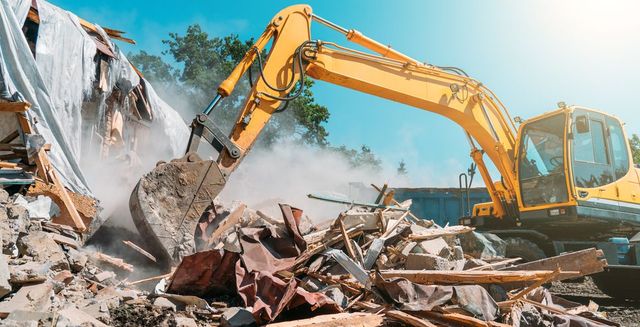Urban development is a constant evolution. Cities grow, businesses shift, and old buildings make way for new opportunities. In the heart of this transformation lies an often-overlooked but essential process: commercial property demolition. It’s more than just tearing down walls, it’s the first step in building the future.
Whether it’s aging office blocks, outdated shopping centres, or underutilized warehouses, the removal of obsolete structures plays a crucial role in revitalizing spaces and propelling cities toward modern functionality and growth.
A Fresh Start for City Spaces
Every city has its share of structures that no longer serve their original purpose. Some sit abandoned, others become safety hazards, and many stand in the way of progress. In these cases, demolition isn’t just a choice, it becomes a necessity.
Commercial property demolition opens the door for new developments that align with current economic, social, and environmental needs. It enables cities to replace outdated designs with smart, energy-efficient buildings and to repurpose valuable land to serve growing populations and businesses. The result is a more vibrant, efficient, and forward-thinking urban landscape.
Supporting Economic Development
At its core, commercial property demolition drives economic change. Clearing outdated structures creates space for innovative business hubs, high-density housing, and retail centres that breathe new life into previously stagnant areas. New buildings bring jobs, attract investment, and boost the local economy.
In many revitalization projects, demolition is the first visible step in a chain of events. After the dust settles, infrastructure improvements follow roads, utilities, public spaces all of which contribute to community renewal and long-term economic sustainability. In this way, what appears to be destruction is a form of strategic creation.
Environmental Considerations and Sustainable Practice
While it may seem counterintuitive, commercial property demolition can support environmental goals when done responsibly. Older buildings often lack modern energy standards and may contain hazardous materials, such as asbestos or lead. Removing these structures eliminates risks and provides the opportunity to build greener alternatives.
Sustainable demolition practices also include recycling materials, reusing salvageable components, and minimizing waste. Concrete, metal, wood, and brick can often be repurposed, thereby reducing the environmental impact of both demolition and construction. This eco-conscious approach contributes to a circular economy and sets the tone for responsible urban development.
Navigating Regulatory and Safety Challenges
Commercial property demolition isn’t a simple knock-down job. It’s a carefully planned process that must comply with local regulations, zoning laws, and environmental safety standards. Each project starts with thorough assessments to identify structural risks, utilities, and potential contaminants.
From there, teams plan the most efficient and secure approach often involving staged demolitions, protective barriers, and air quality controls to safeguard nearby communities. Safety remains the highest priority throughout the operation, ensuring that workers, passersby, and surrounding structures are all protected.
Unlocking the Potential of Underutilized Land
In many cities, space is at a premium. Urban sprawl, limited land availability, and rising property values make every square meter count. Unfortunately, some commercial properties occupy prime locations while offering little value in return. They may be half-vacant, dilapidated, or simply incompatible with modern needs.
Commercial property demolition unlocks the potential of these areas. Once cleared, they become opportunities ready for a new life in the form of mixed-use developments, housing projects, community centres, or green spaces. The transformation brings vitality to neglected areas and creates long-term benefits for residents and businesses alike.
Planning for the Future: Demolition as a Strategic Tool
While often seen as a reactive measure, commercial property demolition is most effective when used proactively. Cities that regularly evaluate the relevance and condition of their commercial infrastructure are better equipped to anticipate growth and guide it in the right direction.
Strategic demolition lays the groundwork for effective, thoughtful city planning. It enables developers and municipalities to align projects with long-term goals, such as reducing urban congestion, improving walkability, and increasing green space. By removing what no longer serves the community, leaders can make room for what does.
Community Impact and Social Renewal
Beyond the steel and concrete, demolition can have a significant social impact. Removing blighted or abandoned commercial properties improves neighbourhood aesthetics, boosts property values, and enhances public perception. It also eliminates eyesores and safety concerns that can contribute to crime or community disinvestment.
Once cleared, these spaces can be transformed into assets that meet real community needs from affordable housing to cultural venues and local markets. In this way, commercial property demolition helps reimagine the urban experience and restore pride to neighbourhoods that have been long forgotten.
Conclusion: Demolition as a Catalyst for Progress
In the bigger picture of urban growth, commercial property demolition is not about destruction it’s about preparation. It clears the slate for something better, more innovative, and more aligned with today’s urban realities. By removing what no longer works, cities position themselves to thrive.
Demolition may be loud and messy, but it’s the unsung hero of transformation. When done right, it leads to revitalized streets, stronger economies, safer environments, and more livable cities. In every crumbled wall lies the foundation of what’s next.
Enjoyed this? Share this post with fellow fans and influencers, and be sure to check back regularly for the latest updates, insights, and news on all things simpcity!

